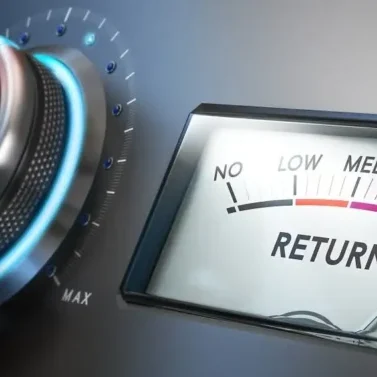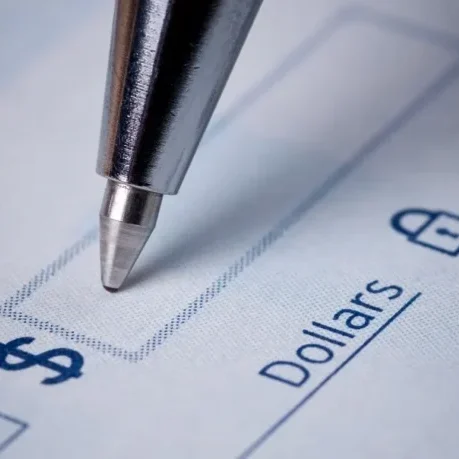How to Finance an HVAC Business Acquisition
Summary: Heating, ventilation, and air conditioning (HVAC) companies have always been attractive acquisition targets for entrepreneurs. Many HVAC companies are small, locally owned, scale well, resist recessions, and have clients with recurring maintenance contracts. These features make HVAC companies attractive to entrepreneurs. These features are also why many buyers target HVAC opportunities and other construction trade companies (e.g., plumbers, electricians, etc.) to consolidate acquisitions into a larger company.
This article discusses how an entrepreneur looking to buy an existing HVAC business can finance its acquisition. We cover:
- Financing options
- How do lenders evaluate a transaction?
- Red flags that can kill an HVAC acquisition
- How are transactions structured?
- How much money do you need to buy an HVAC business?
1. Acquisition financing options
The availability of financing options to the buyer varies based on the size of the acquisition. Transactions over ten million dollars usually get financing through banks, family offices, or small private equity firms. However, smaller transactions under five million dollars have fewer options. These transactions often rely on SBA-backed loans.
a) Buyer's own money
The simplest way to buy a business is to pay for it using your assets. However, this strategy is not realistic or advisable for most buyers. Few buyers have the funds to buy a business outright. Furthermore, most buyers prefer to use financing to improve their return on equity.
However, every transaction requires that the buyer put some of their own funds into the acquisition. This contribution is called the equity injection and covers a minimum of 10% of the project cost.
b) Seller financing
Most buyers require that the seller finance a portion of the acquisition. Seller financing provides a level of comfort to buyers because some of the seller's future payments are tied to the performance of the HVAC business.
c) SBA-backed acquisition financing
The Small Business Administration (SBA) is one of the best and most used financing resources for acquisitions under five million dollars. The SBA does not provide financing directly. Instead, it is the guarantor of last resort to lenders who finance small business acquisitions. The SBA guarantee allows lenders to provide business acquisition financing loans at low rates and attractive terms.
SBA-backed loans have a reputation for being difficult to get. This reputation is inaccurate. The SBA's requirements are more straightforward than those of conventional loans. However, buyers should keep in mind that getting any business acquisition loan is labor-intensive and requires preparation.
The only exception to using SBA-backed financing is if you are buying an HVAC contractor valued at more than $5,000,000 or if you are doing roll-up acquisitions. In this case, you will need middle-market financing.
d) Conventional loans
Conventional loans are a common source of financing for larger opportunities or buyers with substantial personal resources. Lenders lack the guarantees that the SBA provides. Consequently, lenders are usually very cautious and have strict due diligence requirements.
e) Private investors
Private investors are a common source of financing, especially for larger acquisitions. These include wealthy individuals, family offices, and private equity firms. Most of these lenders are specialized, and some operate only in some areas of the country. However, they can be very flexible and finance transactions that are too risky for lenders.
2. How do lenders evaluate a transaction?
Knowing how lenders evaluate HVAC acquisitions helps you prepare better and improves your chances of getting your transaction funded. Every lender evaluates transactions based on their specific criteria. However, due diligence usually focuses on the following key areas.
a) Is the HVAC company profitable?
In general, lenders are interested only in financing good business opportunities. The HVAC business must be profitable and must have good prospects. Lenders avoid unprofitable acquisitions or "turn-around" situations due to their risk. If your acquisition target is not profitable, consider private investors.
b) Is the acquisition price justified?
Lenders won't finance an overvalued transaction because their risk of loss is too great. They evaluate acquisitions carefully to ensure the acquisition is reasonably priced. Each lender has its own valuation rules and processes based on its experience. However, here are some general valuation guidelines for HVAC acquisitions:
- 2 to 3.5 x SDE plus inventory
- 3 to 4.5 x EBIT
- 3 to 4 x EBITDA
Definitions:
- SDE is the Seller's Discretionary Earnings
- EBIT is Earnings Before Interest and Taxes
- EBITDA is Earnings Before Interest, Taxes, Depreciation, and Amortization
c) Can the HVAC business afford the financing costs?
Lenders want to ensure that the profits of the target business can cover the financing cost. Otherwise, they assume that the company cannot afford the loan and will decline the transaction.
d) Does the buyer have the right experience?
Lenders prefer that buyers have experience with business ownership and the HVAC industry. However, there is some flexibility on this point. The buyer should at least have experience managing a company. Buyers without experience in the HVAC industry also need to meet additional criteria, such as hiring an experienced manager.
e) Can the buyer provide the equity injection?
Every business acquisition requires an equity injection from the buyer. The equity injection cannot be financed and should cover about 10% of the project cost. Lenders never finance 100% of a transaction because the risk is too high. The equity injection is mandatory in lender-financed transactions.
f) Transaction size
The transaction size is important because lenders usually finance acquisitions in a specific valuation range. For example, we finance HVAC acquisitions in the $500,000 to $5,000,000 range. Most lenders won't finance a transaction outside their scope regardless of how good it looks.
g) Buyer's credit score
Lenders review the buyer's credit score during the due diligence process. SBA-backed loans have the most flexible requirements and require a minimum score of 650. Lenders that don't offer SBA-backed loans require a higher score.
3. Common transaction red flags
Finding and negotiating an acquisition is a labor-intensive and challenging process. Identifying and handling problems early on in the transaction increases your chances of success and ensures you don't spend time on transactions that won't get financing. Here is a list of the four most common red flags that get transactions rejected.
a) Does the HVAC company have good financial records?
Many acquisitions fail to get funding because the seller can't produce reliable financial statements. Sellers must provide a minimum of three years' worth of financial reports. Without these reports, there is no way to know how the business performs or its ultimate value. Lenders won't finance a company they can't evaluate.
This problem is prevalent in smaller acquisitions since the sellers tend to be less sophisticated. Sellers should use an accounting system to track their finances. The information in the accounting system should tie to bank account statements. Buyers should discuss this issue with sellers early in the process to give them time to consult with a CPA.
b) Is the company up to date with its taxes?
The company should be up to date on its taxes and must be able to provide three years' worth of tax reports. Taxes are important because they help corroborate that the information in the company's financial statements is accurate. Additionally, it shows the lender that the company is not delinquent in its taxes. Lenders will reject any transactions that cannot provide tax documents or that have serious tax delinquencies.
c) Unreasonable SDE or add-backs
SDE is a metric that reflects the company's earnings before the owner's benefits. Most small business valuations use a multiple of the SDE or a similar measure. A higher SDE produces a higher sale price for the seller. Consequently, it's in the seller's best interest to present the highest possible SDE. This situation creates a conflict of interest between the buyer and the seller.
Sellers have the option to adjust the SDE to account for certain "one-time" transactions (e.g., charitable contributions, etc.) that they believe should not be counted as owner's compensation. They do this through "add-backs," which remove certain expenses and increase the SDE accordingly.
SDE and add-backs are common points of contention between buyers, sellers, and lenders. As you can imagine, buyers negotiate to remove add-backs while sellers want to include them. These disagreements can ultimately derail the transaction.
d) Not having any relevant experience
Many transactions fall through because the buyers don't have relevant industry or business experience. From a lender's perspective, the best-case scenario is a buyer with management experience in the HVAC industry. A buyer with business ownership experience, or senior management experience in other industries, could also work. However, the buyer would need to retain an existing manager from the target business.
One way to solve this challenge is to find a partner with the relevant business experience. Unfortunately, it's unlikely that a buyer with no business or HVAC experience will be able to get financing.
4. How are transactions structured?
The structure you use to acquire the HVAC business depends on how much money you need to buy the business and how much you have. In most cases, buyers want to contribute as little as possible since the transaction will probably drain most of their savings.
Many acquisitions in this space qualify as small business leveraged buyouts. In a leveraged buyout, the buyer maximizes their use of financing. When used correctly, leverage can increase your return on equity. Most small leveraged buyouts have three components.
a) Buyer's equity injection
The buyer must provide a 10% equity injection. The equity injection shows the lender that the buyer is willing to commit their own resources to buy the company. The equity injection must come from the buyers and cannot be financed by the seller or other parties.
In some cases, the equity injection can be reduced to 5% of the transaction cost. However, the seller must agree to finance a minimum of 5% of the transaction and must agree to a standstill. A standstill states that the seller cannot be paid until the debt with the senior lender has been satisfied. In our experience, few sellers agree to a standstill.
b) Seller financing
Most of the transactions we have funded have a seller financing component. It can be as little as 5%, though we have seen them as high as 20%.
c) SBA-backed financing
Lastly, the remaining part of the transaction is financed using an SBA-backed loan. These loans are ideal for small business acquisitions, given their competitive terms and flexible requirements.
5. How much money do you need to buy an HVAC business?
Buyers often want to know how much money they will need to buy the business. Start by examining all the costs or investments associated with the acquisition. These include:
- Business sale price
- Capital expenditures (CapEx)
- Working capital additions
- Closing costs
CapEx refers to the funds needed to buy or upgrade the existing property, equipment, etc. Working capital refers to the funds you need to operate the business initially. These funds come from the acquisition loan as well.
Unfortunately, buyers often don't consider CapEx and working capital requirements until late in the acquisition process. These requirements affect the loan size and can cause problems when negotiating the financing package with the lender.
The amount of money you need to buy the business is the sum of all these items, not just the price of the business itself. Consequently, the loan amount is based on these items as well. The equity injection needs to be around 10% of the loan amount for the total project.
Ready to finance an HVAC company acquisition?
The first step to work with us is to submit this form. Once we review it, one of our associates will contact you to discuss the specific details of your acquisition.







